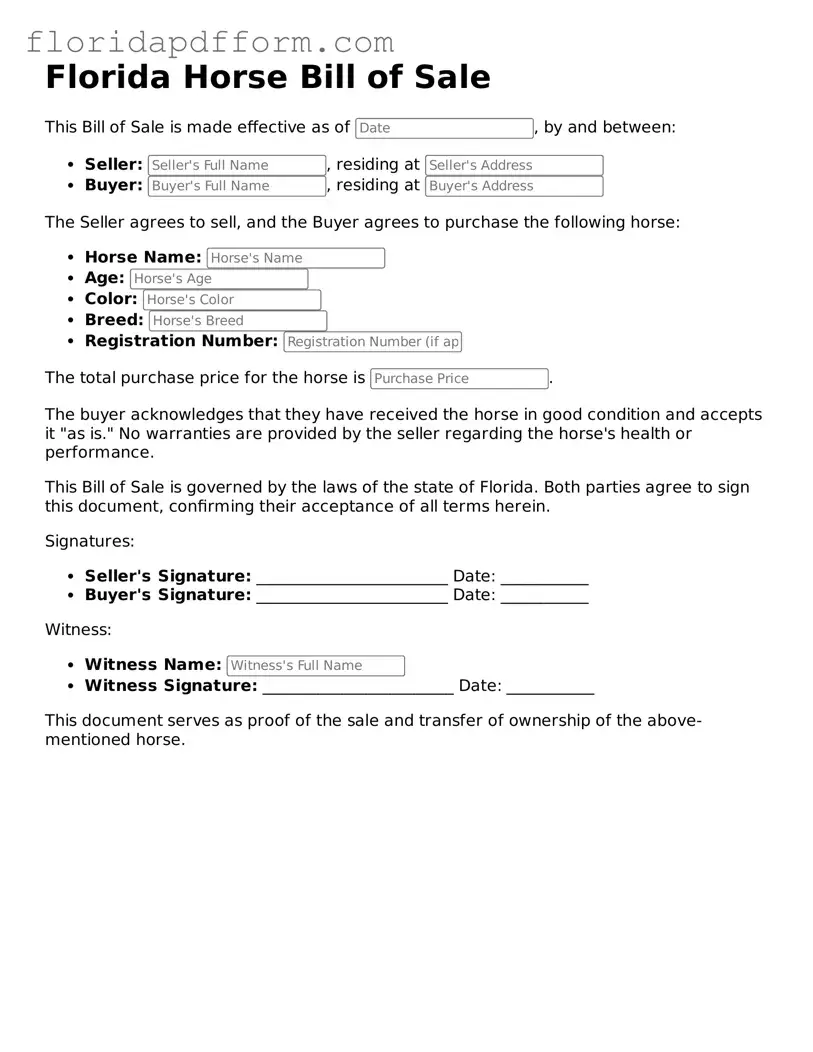How to Use Florida Horse Bill of Sale
Once you have the Florida Horse Bill of Sale form in hand, the next steps involve carefully filling it out to ensure all necessary information is accurately recorded. This document will serve as a legal record of the sale, providing protection for both the buyer and the seller. Follow these steps to complete the form correctly.
- Begin by entering the date of the sale at the top of the form.
- Fill in the seller's full name and address. This identifies the person selling the horse.
- Next, provide the buyer's full name and address. This information is crucial for the buyer's identification.
- Describe the horse being sold. Include details such as the horse's name, breed, age, color, and any identifying marks.
- Indicate the sale price of the horse. Clearly state the amount agreed upon by both parties.
- Include any additional terms or conditions of the sale, if applicable. This may cover aspects like warranties or health guarantees.
- Both the seller and buyer must sign and date the form at the designated spaces. This confirms their agreement to the sale.
After completing the form, make sure both parties retain a copy for their records. This documentation can be essential for any future transactions or disputes related to the horse.
